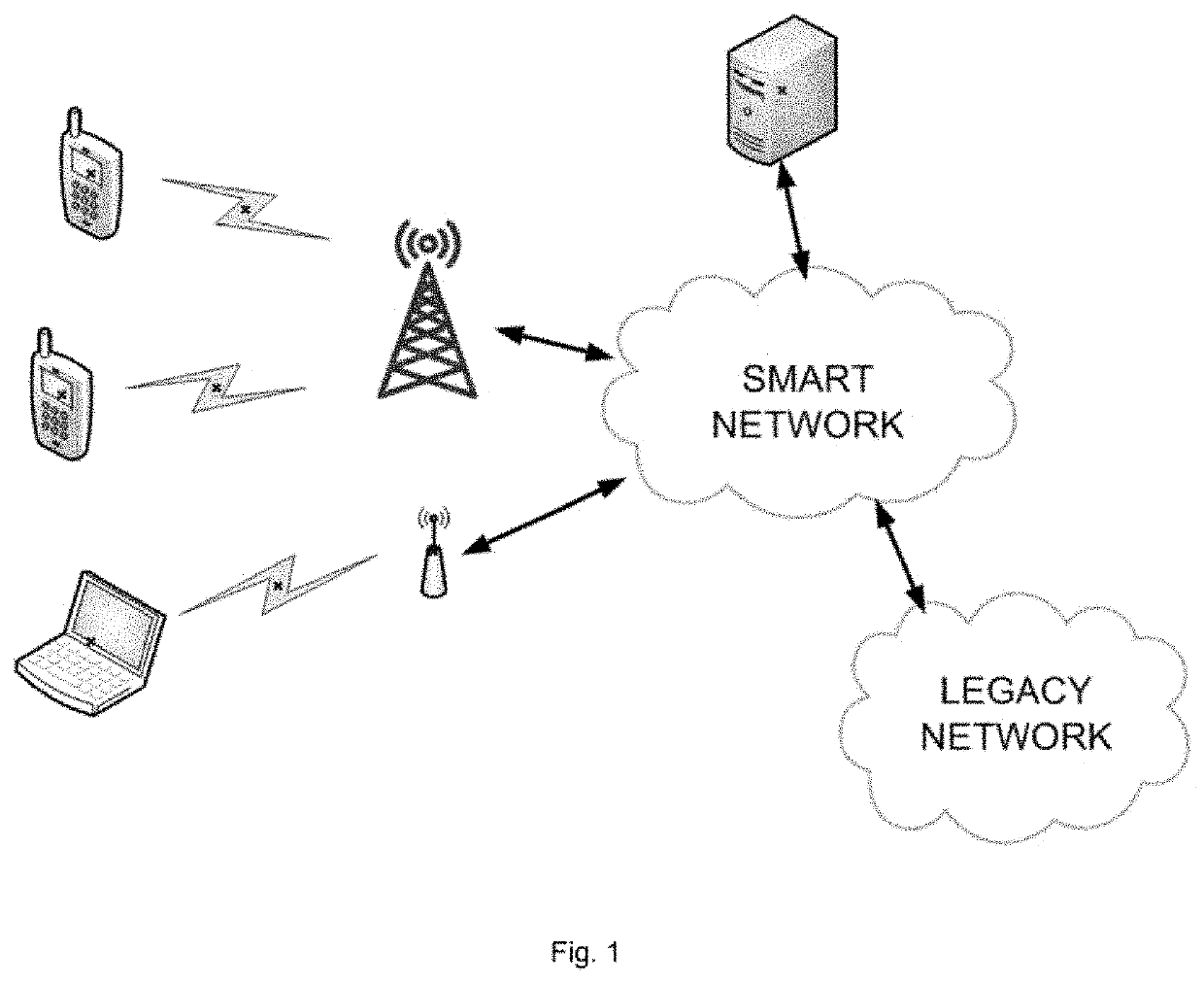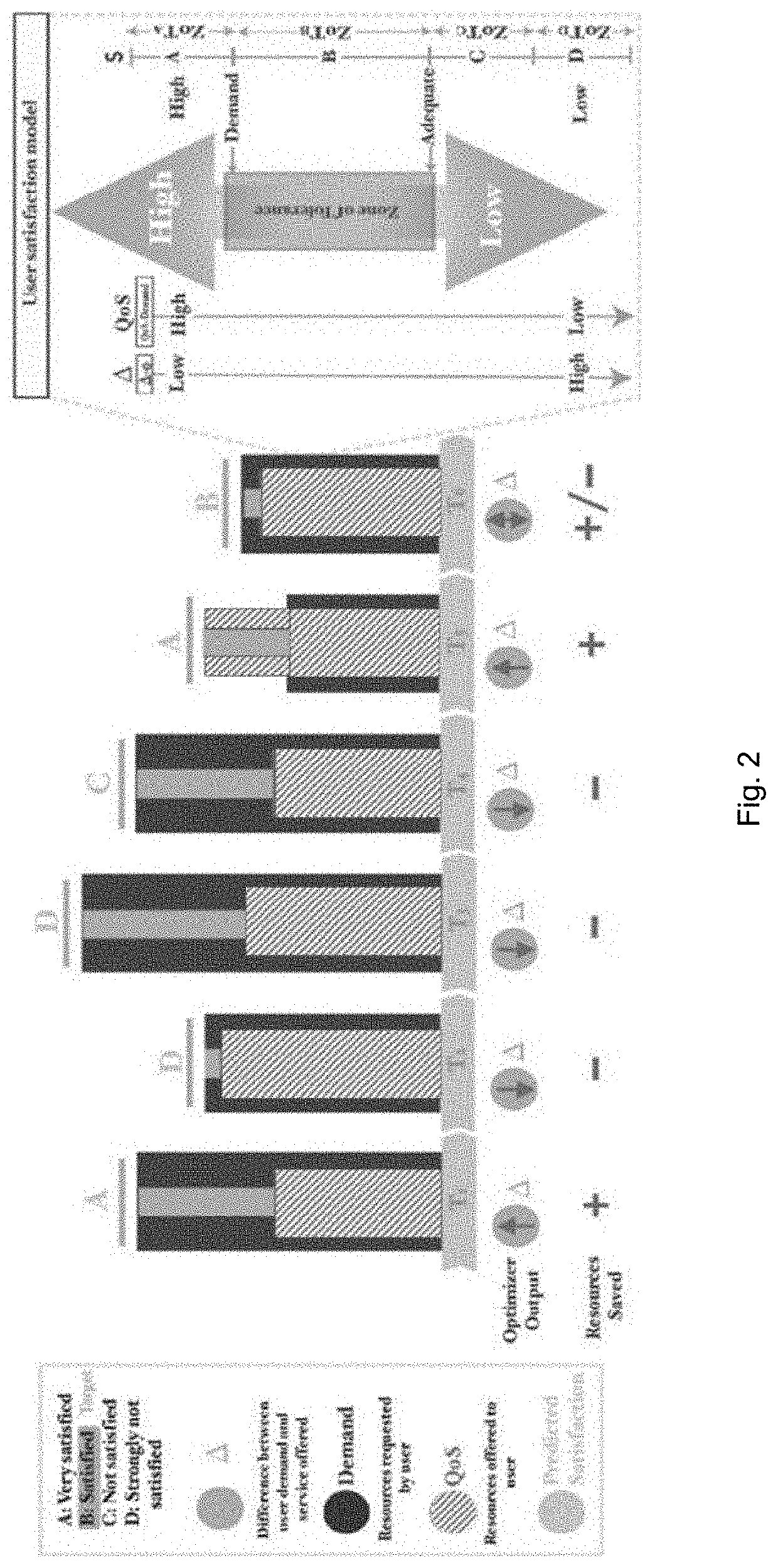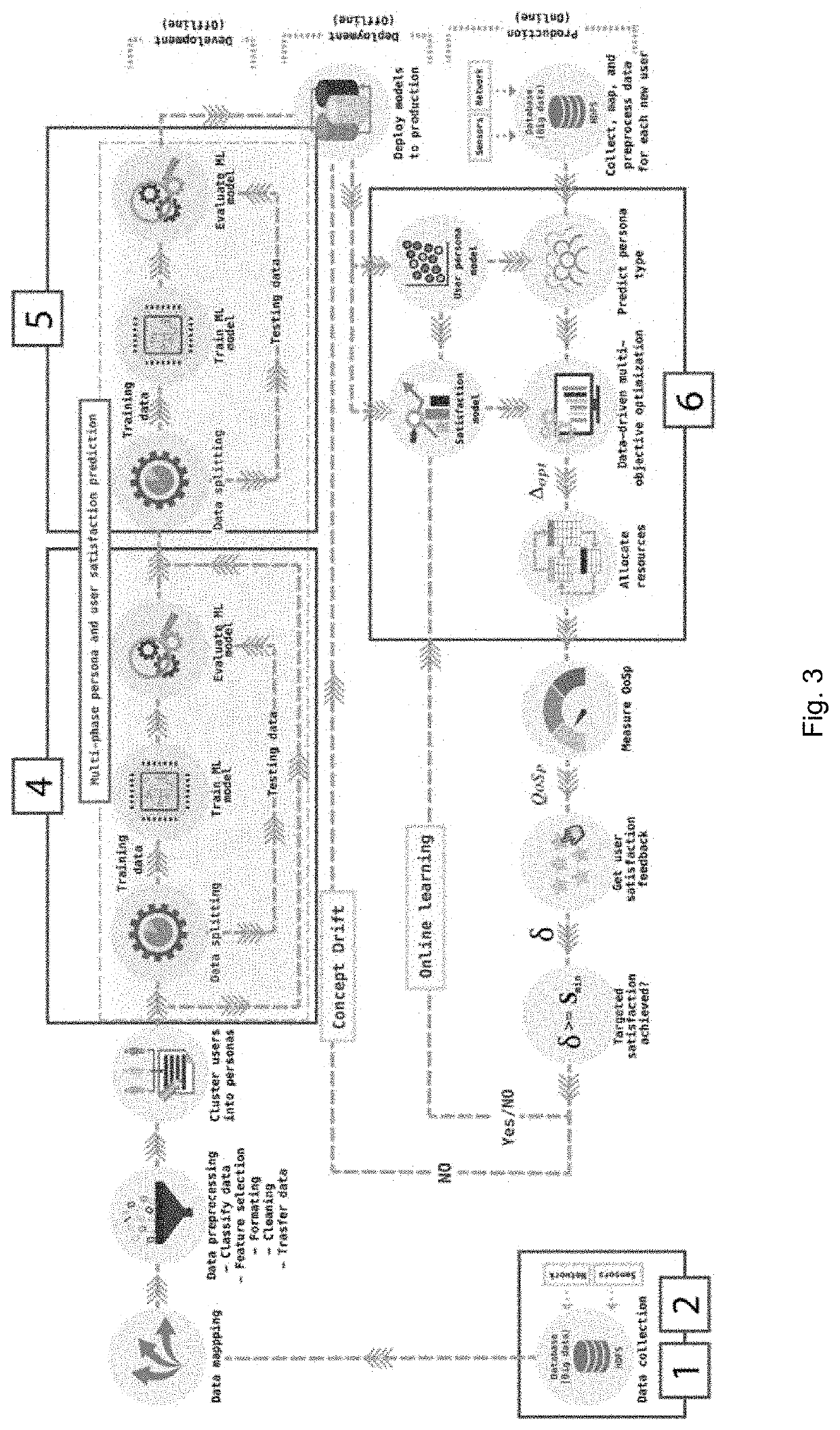Enabling wireless network personalization using zone of tolerance modeling and predictive analytics
a wireless network and zone tolerance technology, applied in the field of telecommunication networks, can solve problems such as inefficient systems, and achieve the effect of greater agility and flexibility
- Summary
- Abstract
- Description
- Claims
- Application Information
AI Technical Summary
Benefits of technology
Problems solved by technology
Method used
Image
Examples
example 1
tal Settings
[0531]1) Cellular Network Environment
[0532]Consider a cell within a cellular network that covers Ottawa, Canada. The cell has one eNB and is connected to users moving within its coverage area. The area of the cell is divided into a k*k grid.
[0533]The cellular network environment is simulated using the parameters listed in Table VIII. The cellular network operator collects context data from users and stores it in a database. The collected data are of two types, real-time user satisfaction levels and context values. Measurements are recorded at each measuring instant. The period between two measuring instances is referred to as a Time Slot (TS). The service provider collects data from the users using a TS length of one second, and the amount of resources consumed within each TS is recorded. Also, for the sake of simplicity, it is assumed that all users have the same minimum requirement for user satisfaction.
TABLE VIIICellular network simulation parametersParameter namePara...
example 2
al Analysis of MOEAs Performance Results
[0543]In this experiment, the performance of the considered MOEAs were evaluated and compared in terms of the metrics described in Section VII-A2. Since some of the performance metrics use the reference set as a parameter, an approximation of the reference set is computed for each instance. In order to test the significance of the performance results obtained in this section, non-parametric tests [85] were used. First, the Friedman N×N procedure was used to validate the existence of statistical differences among the results obtained by all algorithms. The Friedman test examines the null hypothesis (H0) that the performance results for all algorithms come from the same distribution. A significance level (α) of 0.05 was chosen. This means that if p-value is less than 0.05, the H0 is rejected; hence, there exist statistical differences between the algorithms' performance results. Otherwise, H0 cannot be rejected and the samples are likely coming...
example 3
zed vs. Non-Personalized Wireless Networks
[0554]The goal of this experiment is to provide insights into the dynamics of personalized wireless networks and to show how they can be used to save the scarce network resources and improve user satisfaction levels in a controlled manner. The behavior of Surrogate-assisted Personalized Wireless Networks (SPN) is compared to Direct Feedback Personalized Wireless Networks (FPN) (i.e., networks utilizing direct user satisfaction feedback). The latter approach was used as a benchmark to study how user satisfaction surrogates can deteriorate the optimum solutions of OPA, and consequently the resource savings and user satisfaction levels in the network. SPN and FPN are also compared to the Non-Personalized Network (NPN), which tries to maximize the utilization of the available resources and maximize the provided rate. The wireless networks simulated in this section have four active users and NFEs is set to 5000 evaluations. The simulation time fr...
PUM
 Login to View More
Login to View More Abstract
Description
Claims
Application Information
 Login to View More
Login to View More - R&D
- Intellectual Property
- Life Sciences
- Materials
- Tech Scout
- Unparalleled Data Quality
- Higher Quality Content
- 60% Fewer Hallucinations
Browse by: Latest US Patents, China's latest patents, Technical Efficacy Thesaurus, Application Domain, Technology Topic, Popular Technical Reports.
© 2025 PatSnap. All rights reserved.Legal|Privacy policy|Modern Slavery Act Transparency Statement|Sitemap|About US| Contact US: help@patsnap.com



